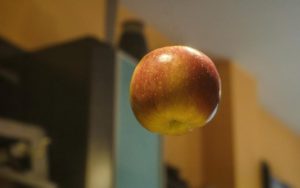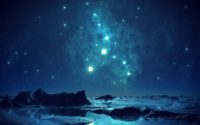Nikola Tesla
| Nikola Tesla – Ingenious physicist, engineer, inventor in the field of electrical engineering and radio engineering Nikola Tesla was born on July 10, 1856 in the village of Smilany, the Austrian Empire, now it is the territory of Croatia. Died January 7, 1943, in New York, USA.Ingenious physicist, engineer, inventor in the field of electrical engineering and radio engineering Nikola Tesla was born on July 10, 1856 in the village of Smilany, the Austrian Empire, now it is the territory of Croatia. Died January 7, 1943, in New York, USA.Tesla grew up in Austria-Hungary, and in his mature years he mainly worked in France and the USA.Tesla is widely known for its revolutionary scientific contribution to the study of the properties of electricity and magnetism in the late XIX – early XX centuries. Tesla’s patents and theoretical works provided the basis for the invention and development of many modern AC-powered devices, multiphase systems and an electric motor, which made it possible to accomplish the so-called second stage of the industrial revolution. |
Nikola Tesla is known as a supporter of ether physics: his numerous experiments and experiments are known, which aimed to show the presence of ether as a special form of matter amenable to use in engineering.
The name of N. Tesla is the unit for measuring the density of magnetic flux (magnetic induction). Among the many awards of the scientist – the medals of E. Cresson, J. Scott, T. Edison.
Contemporaries biographers considered Tesla “the man who invented the XX century” and the “patron saint” of the ether and modern electricity. After the demonstration of the radio and the victory in the “War of Currents”, Tesla received widespread recognition as an outstanding electrical engineer and inventor. Tesla’s early work paved the way for modern electrical engineering. His discoveries of the early period were of innovative importance. In the United States, Tesla could compete with any inventor or scientist in history or popular culture.
The Tesla family lived in the village of Smilany, 6 km from the city of Gospic, the main city of the historic province of Lika, which at that time was part of the Austro-Hungarian Empire.His father is Milutin Tesla (1819–1879), a priest of the Sremskoe eparchy of the Serbian Orthodox Church, a Serbian. Mother – Georgina (Juka) Tesla (1822-1892), nee Mandic, was the daughter of a priest. On June 28 (July 10), 1856, the fourth child appeared in the family, Nicola. In total, the family had five children: three daughters — Milka, Angelina and Maritsa, and two sons — Nikola and his elder brother, Dana. When Nicholas was five years old, his brother died, falling from his horse.
The first class of elementary school Nicola graduated in Smilyany. In 1862, shortly after the death of Dane, the father of the family received a dignity increase, and the Tesla family moved to Gospic, where Nikola completed the remaining three classes of elementary school, and then the three-year lower real gymnasium, which he graduated in 1870. In the autumn of the same year, Nikola entered the Higher Real School in the city of Karlovac. He lived in the house of his aunt, father’s cousin, Stanki Baranovich.
Milutin Tesla, Serbian priest, Nikola’s father
In July 1873, Nikola received a certificate of maturity. Despite the order of his father, Nicola returned to the family in Gospic, where there was an epidemic of cholera, and immediately became infected, although it is not completely clear whether it was actually cholera. Doctors believed that his days were numbered. For moments coming to his senses, Nicola asked his father to allow him to continue his studies as an engineer, promising that if he received consent, he would “cure himself, because he would find the will to live”. The father who had lost all hopes finally agreed – and then, to the surprise of the doctors, the unexpected did happen: Tesla recovered in a few days. The disease lasted 9 months.Nicola, who had recovered, was soon to be called up for a three-year service in the Austro-Hungarian army. Relatives found him not healthy enough and hid in the mountains. He returned back only in the early summer of 1875.
Birth certificate of Nikola Tesla (Serbian-Slavic Cyrillic)
In the same year, Nicholas enrolled in a higher technical school in Graz (now Graz Technical University, where Professor Stefan Marinov taught until 1997) and began to study electrical engineering. Observing the work of the Gram machine at the lectures on electrical engineering, Tesla came to the idea of the imperfection of DC machines, but Professor Jacob Peschl subjected his ideas to sharp criticism, giving a lecture about the impossibility of using AC in electric motors before the whole course. In the third year, Tesla became interested in gambling, losing large sums of money in cards.
AT In his memoirs, Tesla wrote that he was motivated by “not only the desire to have fun, but also the failure to achieve the intended goal.” He always handed out winnings to the losers, for which he soon became known as an eccentric. In the end, he lost so much that his mother had to borrow from his friend. Since then, he has never played cards.
On April 17 (29), 1879, Nikola’s father died.
Tesla got a job as a teacher in a real gymnasium in Gospic, the one where he studied. Work in Gospic did not suit him. The family had little money, and only thanks to financial assistance from their two uncles, Petar and Pavel Mandic, the young Tesla was able to leave for Prague in January 1880, where he entered the Faculty of Philosophy of Prague University.
He studied only one semester and was forced to seek work.
Until 1882, Tesla worked as an electrical engineer at a government telegraph company in Budapest, which at that time was engaged in building telephone lines and building a central telephone exchange. In February 1882, Tesla invented how a phenomenon could be used in an electric motor, later called a rotating magnetic field.
The house where Tesla was born. Currently a museum
Work in the telegraph company did not allow Tesla to carry out his plans to create an alternating current electric motor. At the end of 1882, he settled at the Edison Continental Company (Paris). One of the company’s largest works was the construction of a power station for the railway station in Strasbourg. At the beginning of 1883, the company sent Nicola to Strasbourg to solve a number of working problems the company had while installing the lighting equipment of the new railway station. In his spare time, Tesla worked on the production of a model of an asynchronous electric motor, and in 1883 demonstrated the operation of the engine in the city hall of Strasbourg.
23 year old Nikola Tesla
By the spring of 1884, work on the Strasbourg railway station was completed, and Tesla returned to Paris, expecting a premium of $ 25,000 from the company. Having tried to get the bonuses due to him, he realized that he could not get the money and, offended, quit.
One of the first biographers of the inventor B. N. Rzhonsnitsky asserts: “His first thought was to go to Petersburg, since in those years many important discoveries and inventions were made for the development of electrical engineering. The names of Pavel Nikolaevich Yablochkov, Dmitry Alexandrovich Lachinov, Vladimir Nikolaevich Chikolev and others were well-known to electricians of all countries, their articles were published in the most common electrical engineering journals of the world and, of course, Tesla was also known. ” But at the last moment one of the administrators of the Continental Company, Charles Bechlor (Eng. Cha r les Batchelor), persuaded Nicola to go to the United States instead of Russia. Bechlor wrote a letter of recommendation to Edison, his friend:
“It would be an unforgivable mistake to allow such a talent to go to Russia. You will still be grateful to me, Mr. Edison, for the fact that I did not take a few hours to convince this young man to give up the idea of going to St. Petersburg. I know two great people – one of them is you, the second is this young man. ”.
The first major biographer of Tesla, John O’Neill, mentions this note for the first time. The documented text of the note has not yet been published.
N. Tesla with “The Theory of Natural Philosophy:” Ruger Boschkovich against the background of an RF transformer coil in his laboratory on Howton Street
On July 6, 1884, Tesla arrived in New York. He got a job at the Thomas Edison Company (Edison Machine Works) as a repair engineer for electric motors and DC generators.
Edison rather cold perceived the new ideas of Tesla and more and more openly expressed disapproval of the direction of personal investigations of the inventor. In the spring of 1885, Edison promised Tesla $ 50,000 (at that time an amount equivalent to about 1 million modern dollars) if he succeeds in improving the DC electric machines invented by Edison. Nicola actively took up the job and soon presented 24 varieties of the Edison machine, a new switch and controller that significantly improved performance. Approving all improvements, known for his unscrupulousness Edison, refused to answer Tesla’s question about remuneration, noting that the emigrant does not understand American humor so far. Insulted Tesla immediately resigned.
After working for a year in the Edison company, Tesla gained prominence in business circles. Upon learning of his dismissal, a group of electrical engineers offered Nicholas to organize their company related to electrical lighting. Tesla’s projects on using alternating current did not inspire them, and then they changed the original proposal, limiting themselves only to the proposal to develop a project for an arc lamp for street lighting. A year later, the project was ready. Instead of money, entrepreneurs proposed to the inventor a part of the shares of a company created for operating a new lamp. This option did not suit the inventor, the company in response tried to get rid of it, trying to slander and defame Tesla.



